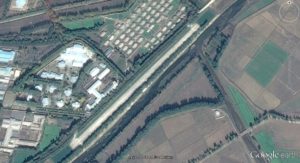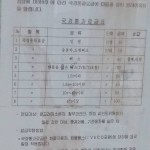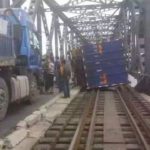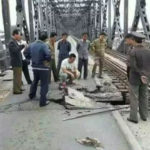Institute for Far Eastern Studies (IFES):
North Korea has recently founded a trading company, ‘Korea Yongpung General Corporation’ (AKA: Korea Yongphung Corporation), which focuses on the shipping industry. On March 28, 2016 North Korean website Naenara introduced the company saying the “newly founded” company “is engaging in and expanding its various trade activities, development and cooperation.” Though the date of the establishment was not revealed, the use of “newly founded” suggests the company’s recent establishment.
According to the website, this new company’s parent is the larger Myohyang Shipping Co. (founded in 1993), and the new company is comprised of multiple companies such as Nos. 1 and 2 Trade Company, Myohyang Shipping Company, an investment trading company, and external economic technology development agencies.
This includes Ryukyung 105 Company and Ryushin Cooperation Company, with other companies and factories such as Ryukyung Condensed Milk, an iron smelt, spring mineral water factory, marine foodstuffs export factory, Taedonggang Construction Company, Myohyang seamen’s academy, Myohyang seamen’s station, and others. It purportedly also has networks of volunteers and stores throughout the country, as well as branches abroad — a foreign economic and technology cooperation agency in Russia and overseas representative agencies in China (Beijing and Dandong) and Singapore.
The new company focuses on such things as operation of freighters and joint venture ships, trading goods, mining, fisheries, construction and technological cooperation abroad, IT development, and development and sale of information technology goods.
In order to run the freighters and joint venture ships, the company recruits captains, chief engineers, navigators, and sailors through the Myohyang seamen’s academy. It is also in the process of developing and modernizing the Sohaeri mine and Toksong ophiolite mine.
In addition, Yongpung Information Technology Exchange Lab is said to be strengthening cooperation with others in information exchange for development of web and mobile programs, development and sale of software programs such as 3D games, and various technologies.
The external economic and technology development agencies are tasked with building international relations in construction, technological cooperation, and architectural ornamentation abroad. They also focus on ship repair and services, inter alia.
The website also introduced the company by saying it “advocates scientific management strategy and corporate strategy based on strong material technological foundation, to expand trading activities in various ways and promote long range ship chartering and joint venture ship operation while also promoting foreign investment of loadstone and ophiolite mining.”
Here is the text from the original Naenara article:
The newly established is expanding its activities for trade, development and cooperation.
Its predecessor is the Myohyang Shipping Company which was inaugurated in 1993. Now it has developed into a mammoth enterprise comprising Trading Companies No. 1 and No. 2, Myohyang Shipping Company, Investment Trading Company and External Economic Technology Development Company. Its business categories include operation of cargo vessels and joint-owned vessels, trade in commodity, mining, fishing, construction abroad, technical cooperation, IT development, production and sale of IT products.
Affiliated to the corporation are such companies as Ryugyong Company 105 and Ryusin Joint Venture Company; Ryugyong Chain Filling Station, Reduced Iron Factory, Onchon Spring Factory, Onchon Aquaculture Farm Seafood Exports; Taedonggang Construction Company, Myohyang Crew Training School, Myohyang Crew Transient Station and several other training centres and some commercial outlets in Pyongyang and other places of the country.
The corporations overseas branches are the External Economic Technology Cooperation Agency in Russia and missions in Beijing and Dandong, China, and in Singapore.
The operation of cargo vessels and joint-owned vessels, the main business categories of the corporation, are conducted by captains, chief engineers, navigation officers and other crews, all of whom are graduates from the Myohyang Crew Training School.
With mining as a key business category, the corporation directs great efforts to developing and modernizing Sohaeri Mine and Toksong Serpentinite Mine while paying due concern to inviting investment in these mines from foreign countries.
The promising talents of the Yongphung Information Technology Exchange Company are playing a pivotal role in promoting exchangs and cooperation with other countries in the development and sale of such software such as the wed mobile application and 3D games and technical services for various kinds of hardware.
The External Economic Technology Development Company is promoting exchanges and cooperation with several countries in construction, technical assistance, and architectural decoration and is briskly conducting trade activities including cargo vessel repair and service business.
According to its scientific strategies for business operation and enterprise management and underpinned by its solid material and technological foundations, the corporation is conducting multi-faceted trade activities, encouraging long-term chartering and joint operation of ships, putting emphasis on inviting investment in the magnetic iron ore and serpentinite mines.




